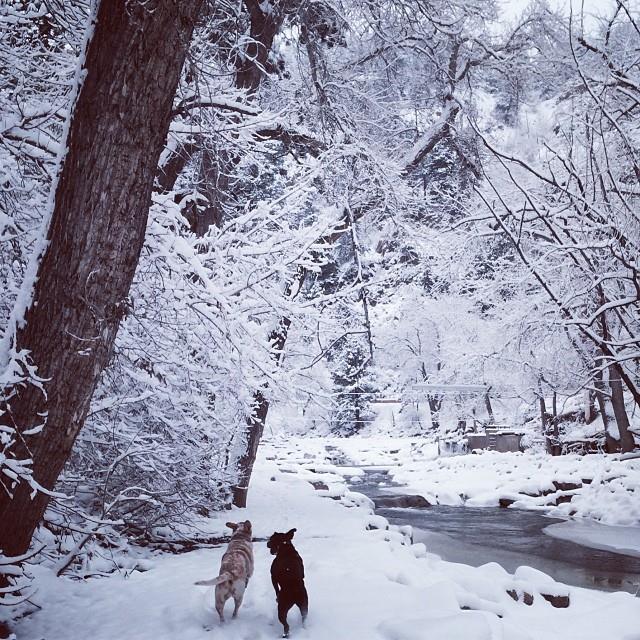Redford (my dog) lovvvves the snow. He’s like a kid on Christmas morning about it—can’t wait to run out and bound about and roll in it and sit in it staring out majestically like a Marlboro cowboy.
But when I run him to work, he sometimes hops about painfully. I have to immediately get him to jump in some fresh white snow, and run around, and he licks his paw.
Please stop using salt. And if it’s got added chemicals, or dyes, he and every other dog are inadvertently licking that up, too.
Also, salt is hard on green things, like your fancy landscaping. ~ ed.
When the snow starts to fall, your first thought probably isn’t the environmental impact of using salts and other de-icing products. It’s one of those cases where the risk of slips and falls outweighs the potential damage to the surrounding ecosystem.
This thinking is hard to argue, but it doesn’t mean you can’t do something to try and limit your impact during the wintry periods of the year.
Why Salt and Chemicals are…Bad
Some of the most commonly used and popular de-icing products are made from chloride (calcium, potassium, magnesium). Chloride is not biodegradable or involved in any biological processes, so it will not be broken down in the soil or by plants. As a result, the compound will move into the soil and potentially harm plants and may even get into groundwater supplies and spread to other areas. Similarly, if pets eat these compounds or touch them with their paws or skin they may suffer skin irritation or illness.
When using chloride products, look for packaging that includes calcium chloride as a primary ingredient, as this variety doesn’t contain cyanide and is considered the least harmful to the environment.
Environmentally Friendly Alternatives
Do it Yourself With a Shovel
The human body is relatively energy efficient. That’s what makes it one of the best ways to clear snow and ice. No, it’s not quick and your back will hurt afterward, but the exercise is good for you.
Sand or Birdseed
Once you clear the snow, you’ll likely still have an ice problem. Sand and birdseed are two great alternatives to salt, rocks, or some other substance that can make a mess of things. However, sand can get messy when the snow starts to melt. Whereas with birdseed, birds in your area, assuming they haven’t migrated, will take care of the cleanup.
Update: sand is a no-go, too!
“…Sand is a critical, heavily mined commodity, vital for construction (concrete, glass), electronics (silicon chips), and everyday products.
Cambridge uses salt and brine focusing on liquid de-icers like magnesium chloride and exploring organic additives like beet juice for better performance at cold temperatures and reduced corrosion, though specific, consistent city-wide use of beet juice that regular
Ive only ever seen them use beet juice over in Cambridgport…” ~ a helpful comment from Redditland.
Pre-Treat Surfaces
If you must use de-icing products, do so before the snow starts to fall. This will help you to control where the product goes and will help you to use less overall. As the snow starts to fall, shovel the top layers of snow and reapply any product where needed.
Stay Ahead of Heavy Snowfall
Shovel snow early and often. As snow is falling, get out there and start clearing the driveway and sidewalk. This means going over the same places several times. However, this method will let you keep surfaces clear of both snow and ice. Try using a broom in areas that you’ve cleared to get rid of any remaining snow.
Be Extra Careful
Even after you cleared away snow doesn’t mean there isn’t ice you can’t see. Take your time to use the edges of your shovel to pull up any remaining ice. Additionally, make sure you are wearing the appropriate shoes with cleats that can go through ice and snow to provide the grip you need.
 Share on bsky
Share on bsky

Read 2 comments and reply